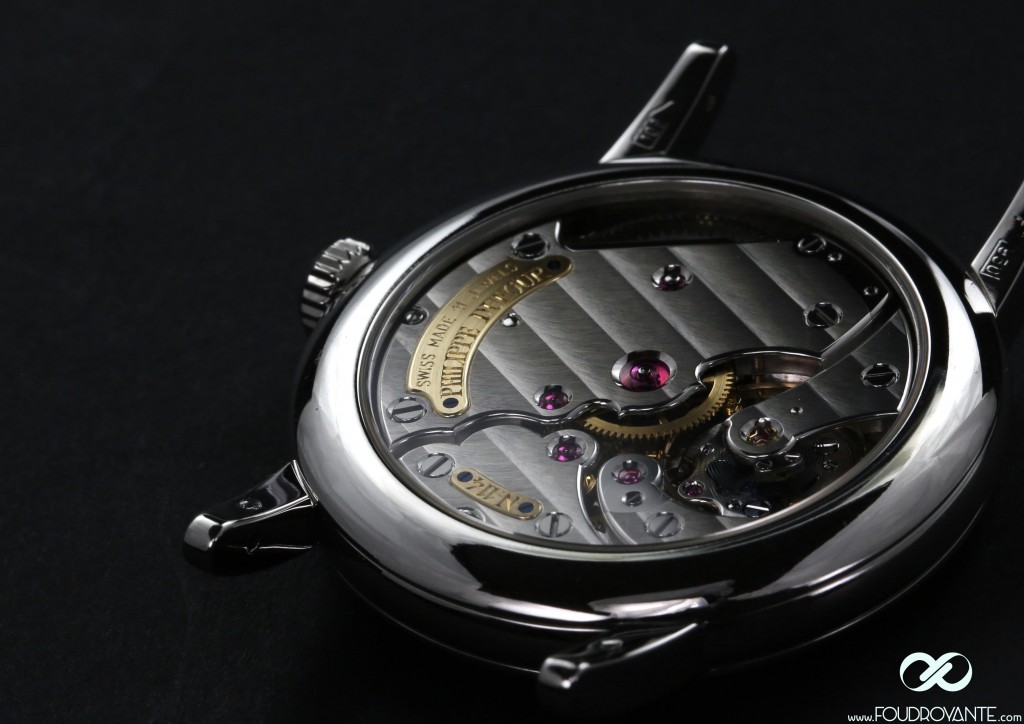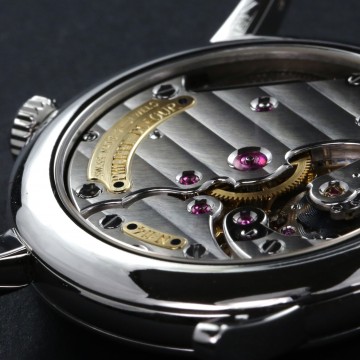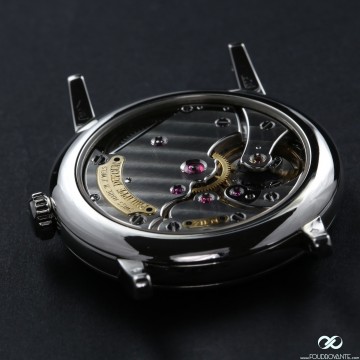Philippe Dufour Simplicity: In search of lost time 2/3: the mechanism and the external design
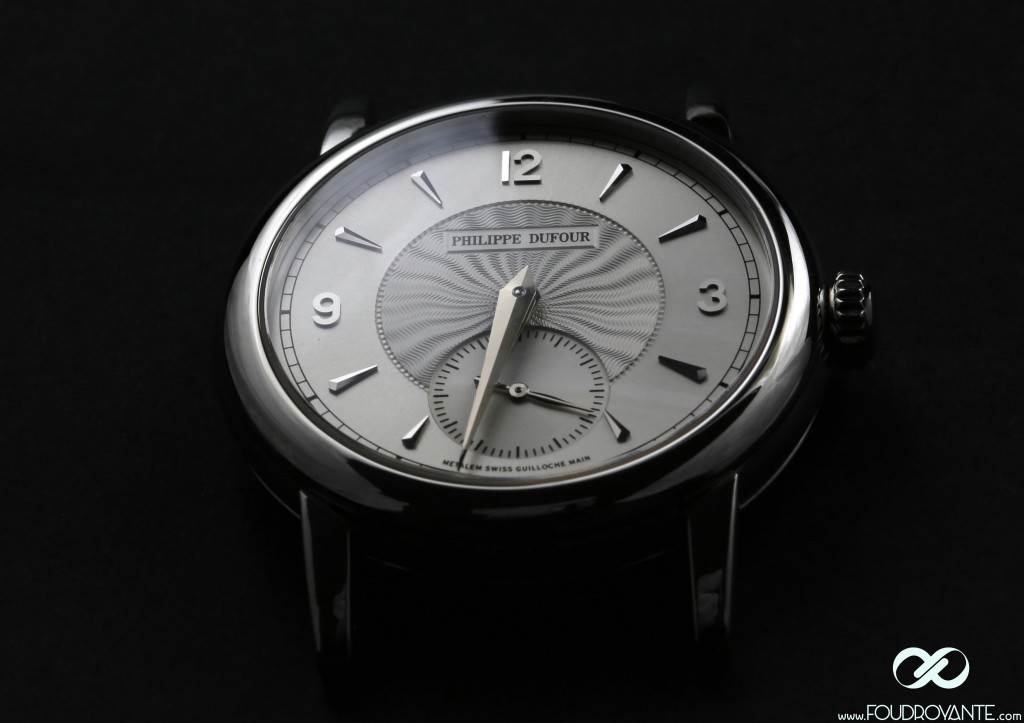
Hello my friends,
Here are some details about the mechanism and the external design.
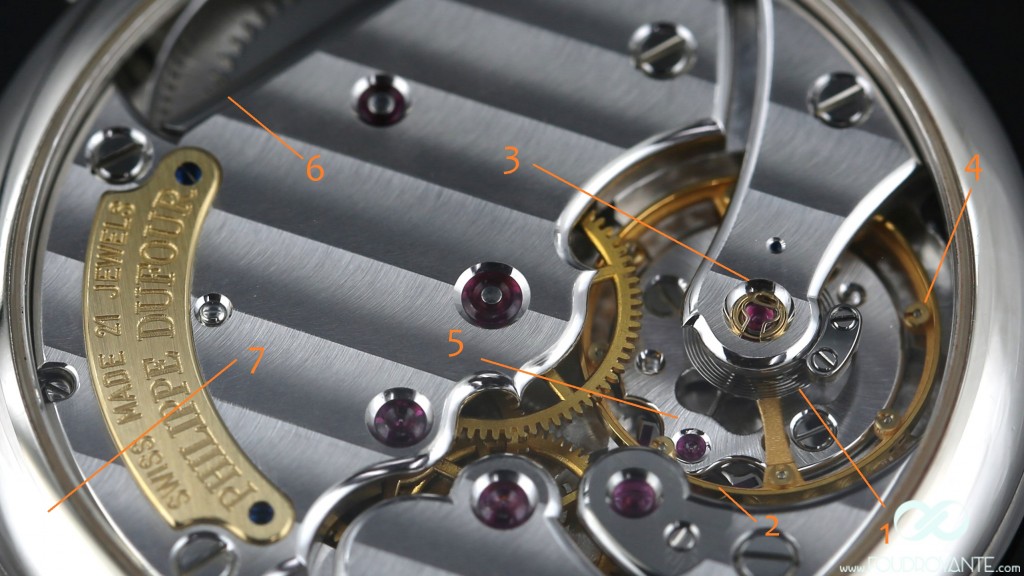
1- Breguet hairspring with Phillips coil: blued
It is a classic high-end hairspring. The over-coil design compensates the hairspring tendency to be off centered: it straightens towards the end of the coiling.
The hairspring doesn’t feature any special finishes beside the blue-stain applied during the manufacturing, as it is made with a classic technology (one does not fiddle with such a sensitive element).
Philippe shapes the hairspring curve with traditional tools, a Spiromatic and a profile projector.
The specificity of these hairsprings is that they come from a stock from the 50’s. Because of the 60 years they remained stacked into drawers, the Elinvar they are made of has become exceptionally stable:
There hairsprings have reached their maturity, which increases the chronometric stability as well as the durability of the Simplicity’s regulating organ.
2- The balance wheel: vintage stock.
Akin to the hairspring, the balance installed in the Simplicity comes from stocks from the Vallée. This part was originally intended for a single crown chronometer, most certainly produced after WW2.
3- The balance wheel bridge: No ratchet click.
Philippe has opted for a system without ratchet click. It is a choice that I find a bit puzzling. This “free-sprung” system is nonetheless definitely high end, but also too contemporary. This intrusion of modernism into a neo-classic watch makes me uncomfortable
With this technical choice, Philippe aimed at timelessness (an essentially vintage prospective, at a time of planned obsolescence…). In a system with ratchet click, the pins maintaining the hairspring gradually cut into it. This produces micro-particles of Elinvar dust which mix with oil. Ultimately, this mix makes the hairspring slightly sticky, which in turns changes its settings (flat/hanging)
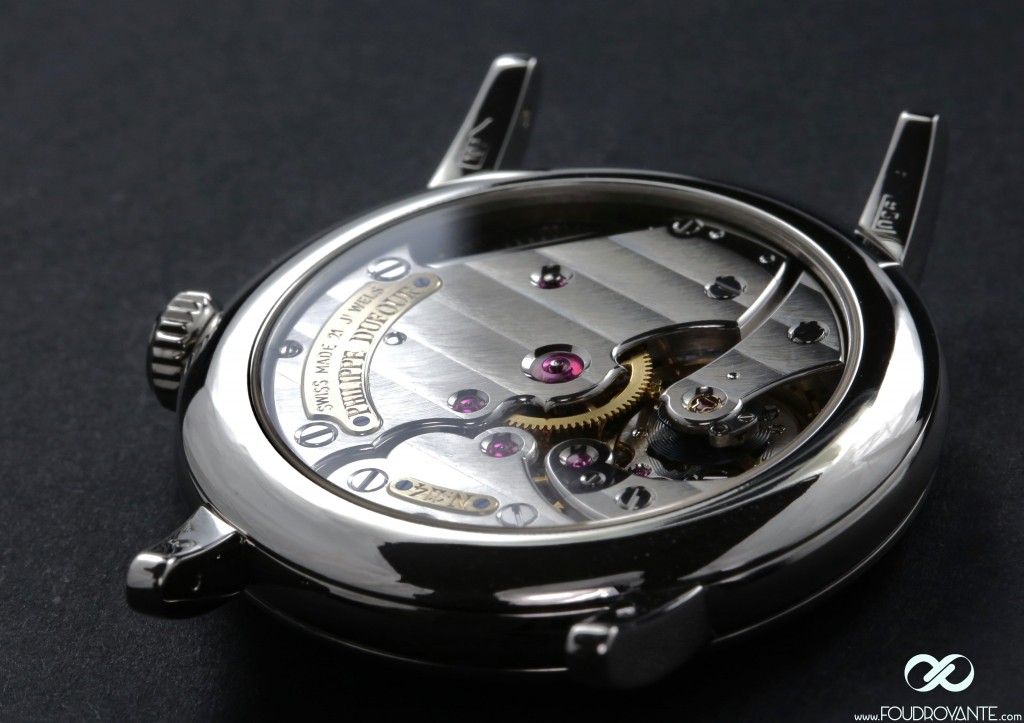
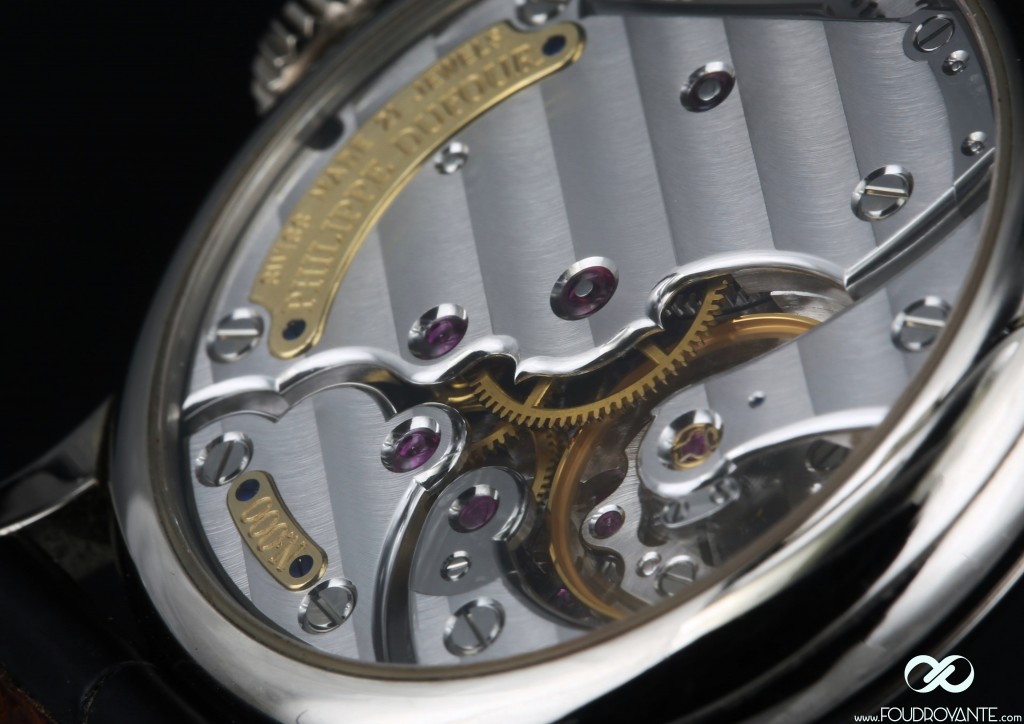
4- Eccentric weights: incidence of the free spring.
Since there is no regulator, the length of the balance spring is set. The regulation is therefore achieved with the balance wheel. It features two eccentric weights: the balance’s inertia increases as they are rotated towards the periphery, reducing the amplitude of its rotation (max 90°). When they are rotated towards the center of the balance wheel, the reduced inertia increases the amplitude of the rotation (180° max).
5- Lever Bridge: circular.
The lever bridges are usually “C” shaped. Philippe opted for a circular layout, which provides more stability because the mechanical constraints are more evenly distributed. This part is set and maintained with three struts and three screws, versus only two for the “C” shaped bridges.
6- The ratchet click:
In a watch, the ratchet click stops the ratchet wheel (located above the mainspring barrel). It prevents the barrel from instantly unwinding.
In wristwatches, ratchet clicks are usually rounded and mounted on a pin. For the Simplicity, Philippe made a definitely old fashioned choice, with a straight sprung click. Finishing this part takes quite a long time, a full day of beveling and polishing.
This solution, as old fashioned as it looks, showcases the rewinding process. The ratchet click leaps at every tooth of the wheel and produces a low and pleasant sound. I could be compared to a sports car stainless steel exhaust system, technically useless but audibly and aesthetically enjoyable.
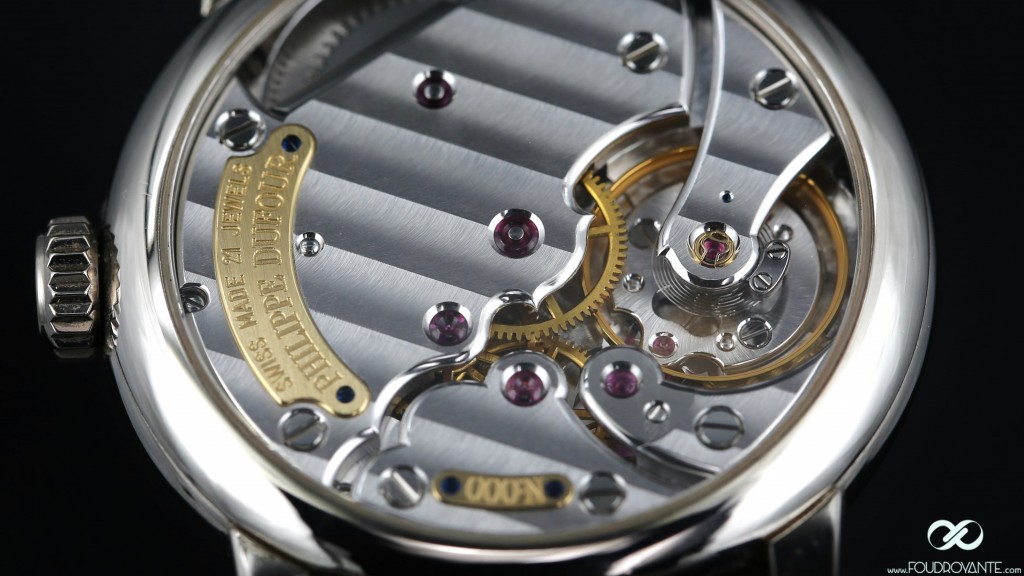
7- The watchcase: inspired by the 50’s/60’s period
Philippe designed this case by himself, when he was still a kid; it is the same as the duality’s. The middles are rounded, which provides the Simplicity with an incredibly flat profile (the caliber is very thin). This shape is also reminiscent of pocket watches. The appended super thin lugs make the case look even more refined, almost too much for my taste.
The Simplicity sticks to the trend, with a diameter increased to 37mm from 34mm.
It is a good thing: a 34mm watch looks too small on big wrists like mine of Philippe’s.
Yet, the 37mm Simplicity remains a small watch with perfect proportions, like Megan Fox or Marilyn Monroe…
Philippe explains: “I tested 39mm, but it wasn’t conforming to the Golden number, 38mm was already too much”.
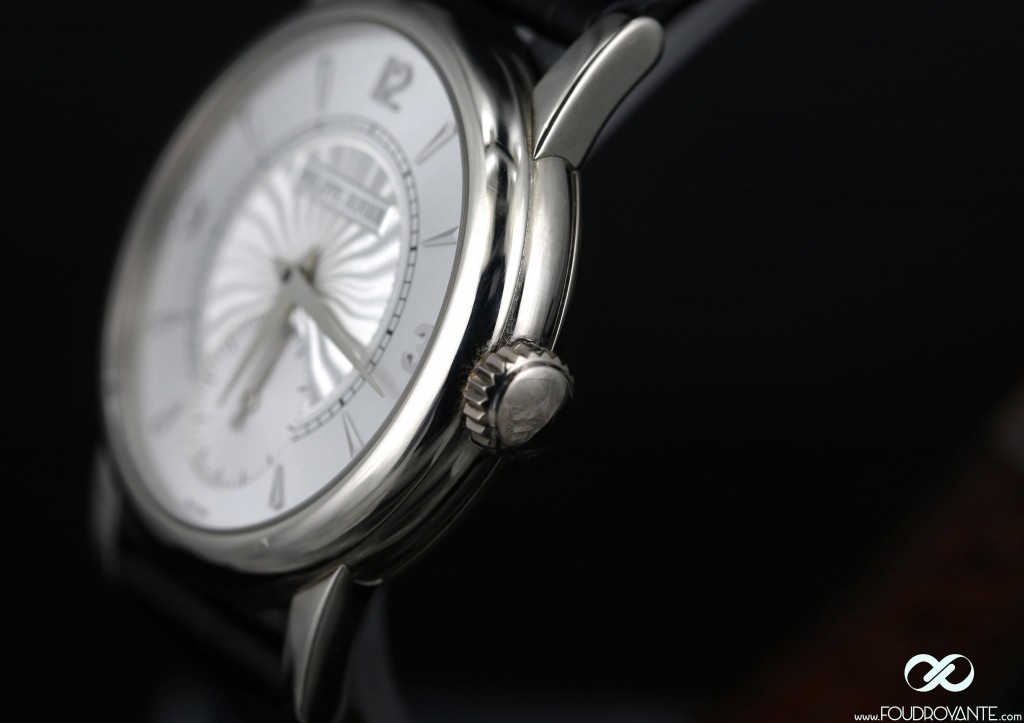
8- The dial: subcontracted
Philippe created the Simplicity as a timeless piece, technically (finishes) as well as aesthetically .
The design of the caliber is flawless; the quality of the finishes of a Simplicity is second to none, at a level that only very few houses, like Greubel Forsey, could reach.
Yet, 20 years have passed since the inception of this design, and it shows. Philippe solved this problem by increasing the size of the watch to 37mm, a more actual size.
However, the guilloche on the dials (produced by Metalem, chosen for their durability: Zapon coated) hasn’t changed since the beginning, and it looks old fashioned. It is available in two versions: silver and slate; I prefer the later as it matches perfectly the rose gold case.
With a white metal case (go crazy, choose the platinum version),
the lacquered version and not enameled
of the dial recently released is a must-have (arguably the most beautiful version of the Simplicity, it is the most refined).
This lacquered version wasn’t planned…. But to fit the thicker enamel dials in the watch, Philippe would have had to modify the design of the case, and therefore the overall aesthetic harmony.
This said, the result is astounding as the lacquer is as dull as enamel. I think that the lacquered dial/white metal version is a paragon of minimalism.
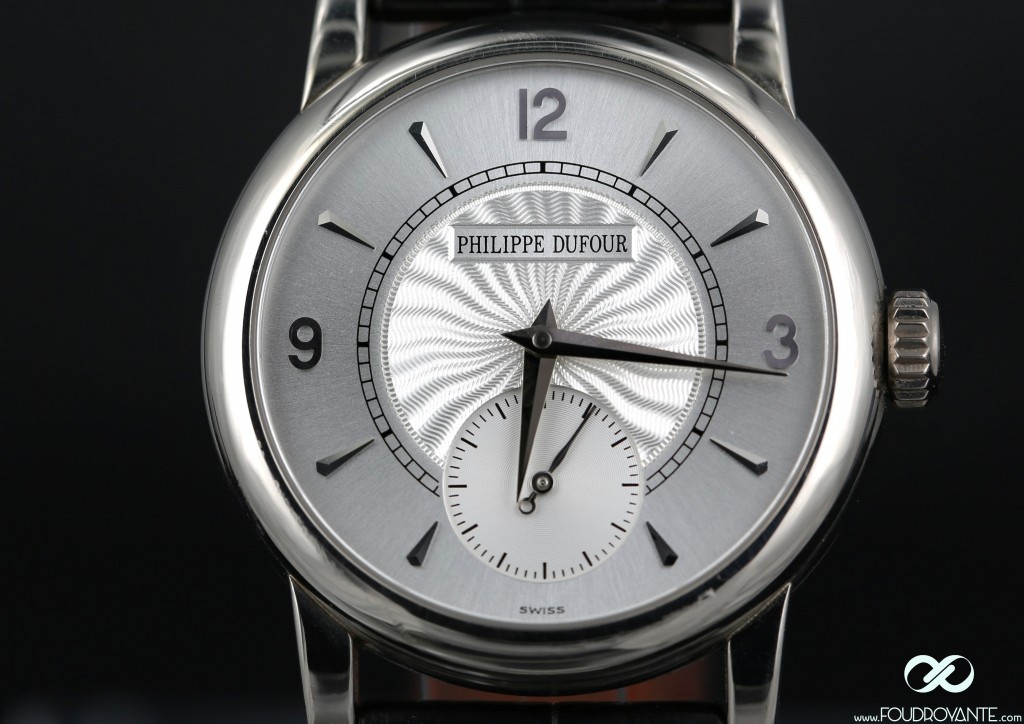
- I kept the best for the last part, the finishes.
Malik.
